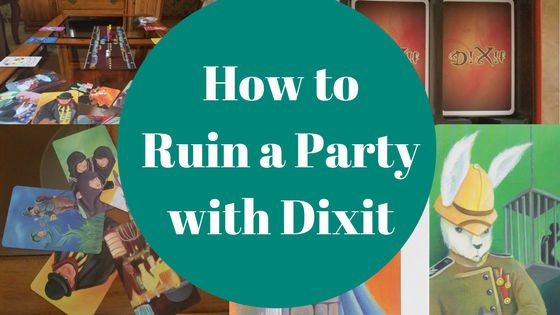
Prologue
Ah, you’re just in time for the lesson.
It’s about storytelling, manipulation, and dealing with my issues through board games.
“But how?” you ask.
Well, when I was left emotionally devastated by my ex during the most vulnerable year of my life I made a realization: I’m not going to be happy.
Followed by a decision: No one else is allowed to be happy either! At least not around me.
After that, I made it my mission to be a living, breathing, monkey wrench that inserted myself into every happy machine that they could find.
But how? How do I trick people into accompanying my misery?
Then the idea came to me: board games.
But not just any board game, I needed one that was just cerebral enough to force anyone who played it to dive deep down into the bowels of introspection with me wherein the source of misery lies.
And furthermore I needed it to look cute while doing it. Teehee!
In enters: Dixit by Libellud games.
So follow my lead as I explain through example.


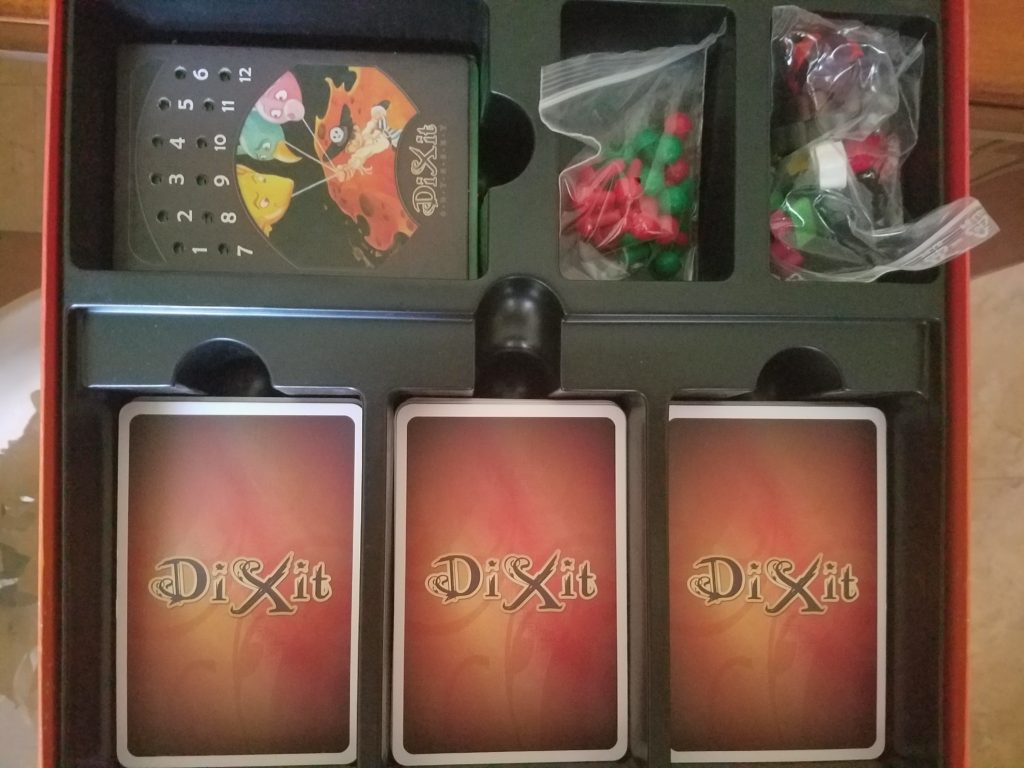

The Dark Materials
The point of the game is storytelling, so you storyteller, mischief-weaver, grief-machinator must pay close attention to these – your dark materials.
One scoreboard, 24 voting tokens, 12 wooden rabbits, 12 voting boards, and 84 image cards.
Ah, the cards.
The fantastic design of the cards are why this game stands out among others for this woefully delightful errand. You’ll find that these whimsical illustrations could’ve gone either in a children’s novel or a spell book.


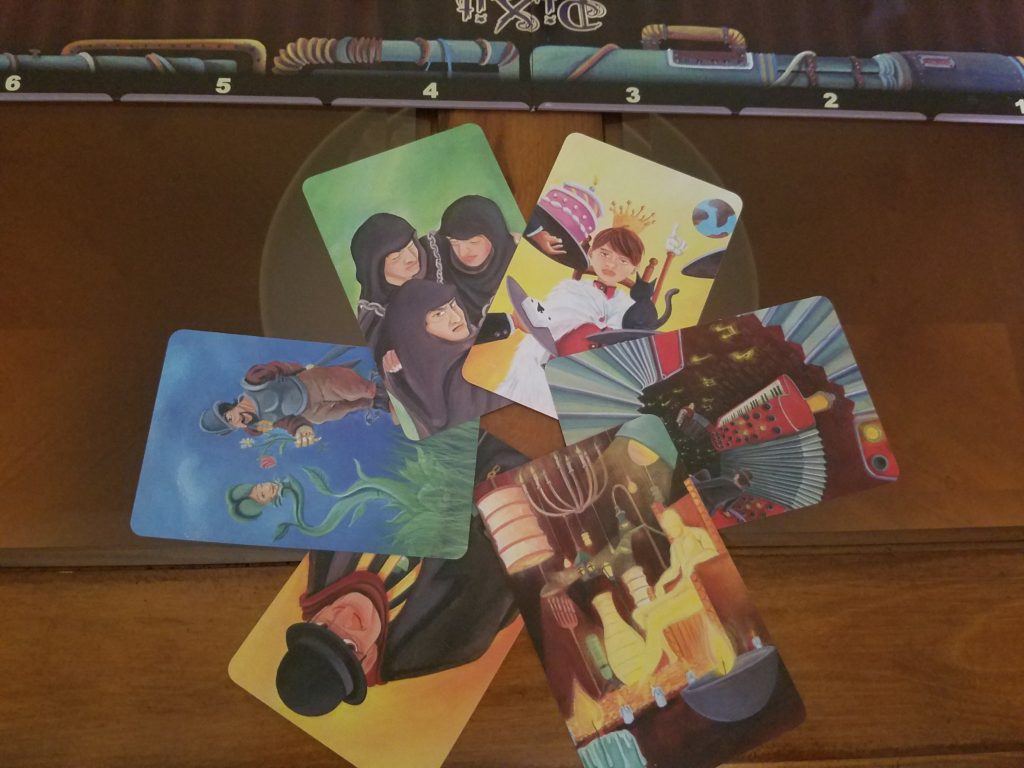

The Set Up
The game takes up to 12 players but let’s start small. Let’s start with six.
Find six unassuming and sympathetic patsies to lay your ploy.
You’ll introduce the game as something warm and eccentric like fresh bread pudding.
Remember that this is Dixit: Odyssey.
The components vary from edition to edition but the rules are still the same and there’s plenty of variations once you’ve gotten familiar with them.
Unfold your plot, like the scoreboard it is in the middle of the table.
Each player gets a voting board of a certain color and a corresponding rabbit. You’ll place the rabbits on 0 because that’s what everything amounts to eventually.
The 84 cards are shuffled and 6 are dealt to each player. The remaining cards are the draw pile.
The Rules Before You Break Them
Each player gets a turn to be the storyteller whose job is to pick one of the six cards in their hand to…well…tell the story.
You must describe the card but indirectly. You can’t just describe the illustration for what you see but for what it means.
For example, look at card A.
Instead of saying there’s a woman with long hair looking through a telescope, you could say:
- “I can see that breakup from a mile a way.”, or,
- “Hmph. Typical.”, or
- “Tsk tsk.”
You can use quotes or passages from literature or movies, onomatopeias, one word, or many words to describe a card but you cannot just say what you see, you must say what you feel.
Players use their own interpretation of the “story” to match a card from their hand with what was said and pass it along to the storyteller.
The Reckoning
The storyteller then places the cards around the voting board, anyway they want.
The goal for the players is to find the image of the storyteller among those revealed. They vote in secret using their boards and one cannot vote for their own image…sadly.
If all the players find the storyteller’s image, or if no one does, then the storyteller gets nothing and everyone else gets 2 points.
In any other situation, the storyteller gets 3 points as well as whoever else picked the correct image.
Each player other than the storyteller gets 1 bonus point for each vote earned by his or her image (the maximum you can get is 3 bonus points “but why punish popularity?” I say).
The next turn begins when everyone replenishes their hands to six cards. The game is over once someone has reached 30 points.


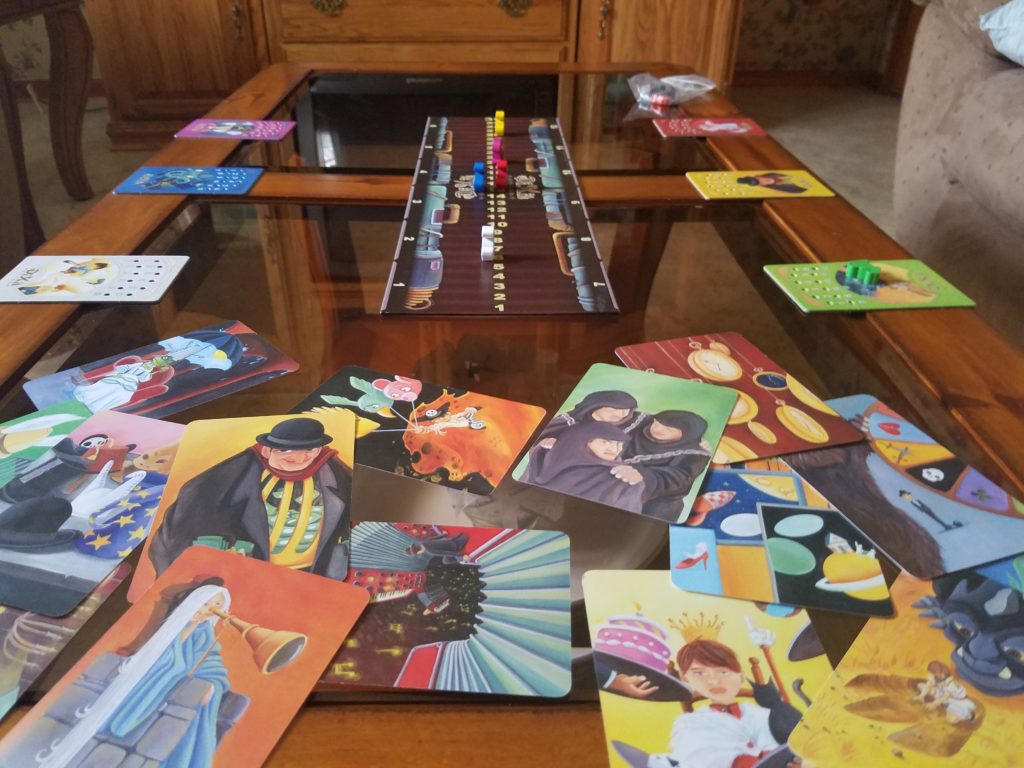

The Plot At Hand
Now that the mechanics are out of the way, let’s make people cry!
This game is a lot like sad pop music: they think they’re having fun listening to heartbreak, but it has a way of subverting any joy you feel and turning it into more of an “excited sorrow.”
By the end, one finds themselves more upset than they realized.
And that’s this game…a sassy Rorschach blot test.
Let’s test this out in a hypothetical scenario.
In fact, we’re in one right now.
Inception.
A Round of Play
Imagine.
Your friend Tiffany-or-Something, a children’s librarian, who knows that you’ve been a depressed recluse, sends a text to ask if you want to come have fun at a board game night with some friends.
On the inside you go: “Happy? People? Both? God no.”
But then when you take a sip from your third glass of wine, you text back “Yes. All the fun.” and on the inside “Will be sucked up by me.”
So you arrive and it’s the librarian, the owner of a detail shop, a professional student, an aspiring social worker, and a little millenial lost.
Then there’s you.
That makes six. Perfect.
You gather ‘round the table, set up the game, make them giddy with anticipation, and then you play (with their hearts).
The first game is clumsy and no one can really manage to tell a story beyond three words, but that’s to be expected.
Words worth anything, take time and patience to be drawn out of the soul.
But the interest is there, your plan has taken root, and from there it flourishes.


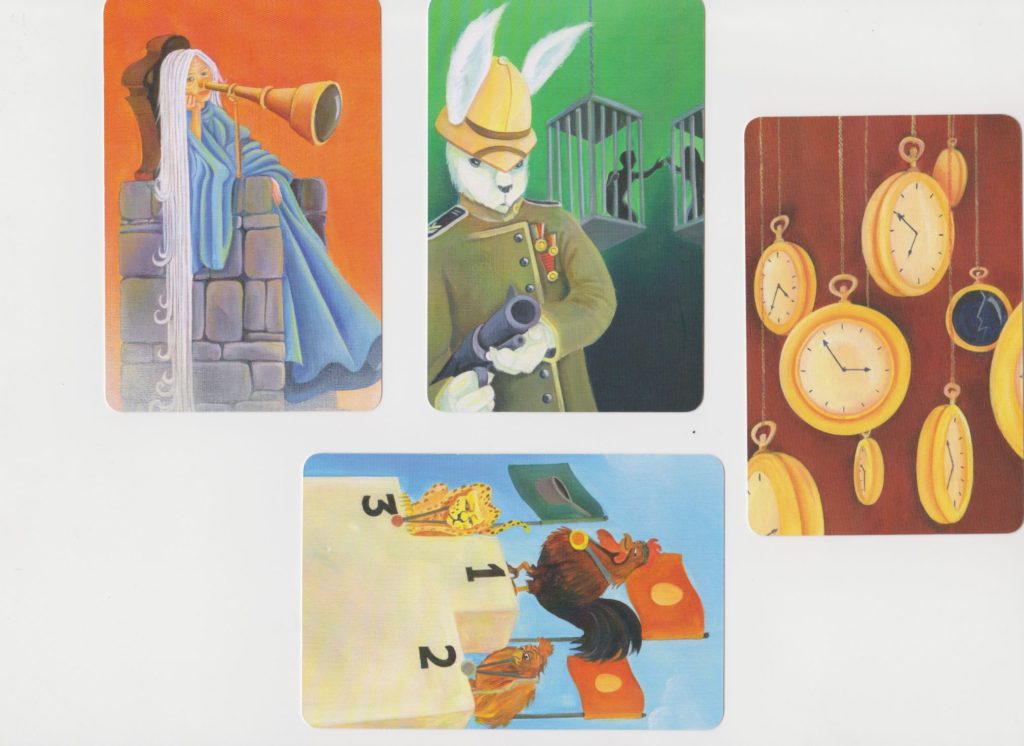

The Real Game
The next game is what you want. They’re getting the hang of it.
Saying things like “The rain in Spain stays mainly on the plain,” “Chang chang changitty chang sha-bop,” and “This town ain’t big enough for the both of us.”
That’s when you lay it on them. You pick up the card and no matter what it looks like, examine it thoughtfully, rub the chin, raise the eyebrows, put it down and stare at them.
Then you say “Everything dies.” And just…watch. The turn that night takes. Oh. So worth it.
Now every card is tinged with sadness.
Like Example B. Another storyteller goes “My boss.” And that’s the card they play.
When the reckoning comes and we calculate scores, unexpected group therapy starts happening.
The librarian goes “I hate my boss. She’s evil incarnate.”
The social worker goes “Mine too, hun. Makes me wanna leave the industry.” “But the thing is, I love helping people!” “Me too!”
And then someone notices how quiet the detail shop owner has gotten. “Sam?” someone asks “How did this card make you feel?”
He just stares back and says “Everything dies. My relationship. My business. Me next probably.”
“Oh, Sam!”
And therein lies the trap. Don’t say the trap part out loud but it’s this: One must never talk about feelings. Not openly.
Not even joy is safe, for to discuss happiness would be to chase off its already fickle presence.
Once you do that, you’ve won! Nevermind the scores.
In the End
Henceforth, every card played for the rest of the night utterly shatters the emotions of everyone involved.
It’s…exquisite.
Of course when one plays this game on a regular game night, apparently the cards illicit flights of fancy and howls of laughter.
But uh uh. Not tonight.
That’s why you’re here. And you’ve done well.
And you’ve learned today’s lesson…almost.
Tell me, if this was all a story, if we were playing Dixit right now, which card would be the one that represents its essence?
Go on.
Pick.
I’ll wait…

Be the first to comment